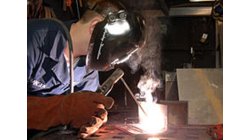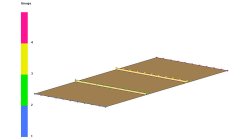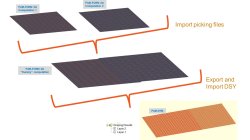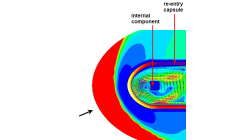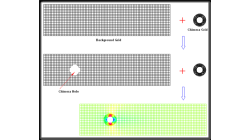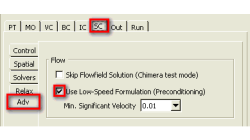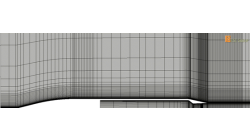- Home
- リソース
- ヒントとコツ
Tips & Tricks
How to simulate welding process with variable weld speed and Heat power ?
In real process, the user changes the velocity depending to the distance already covered or still to cover in welding process. To better reproduce the start and the end of a welding process, the velocity must be able to vary during at least these two phases as well as the heat source power. And to be more generic, this feature introduces a time dependency of the heat source velocity and its power density.
Mandikizinoyou
Taro
Welding & Assembly, Virtual Performance, Virtual Integration Platform
e-Café #2 PYFUN, PYSTOP - Programmer ses propres critères d'arrêt de calcul
Comment programmer des critères d'arrêt de calcul en Python
Jean-Charles
Paulin
Virtual Performance
Internal injection lines modeling
Internal injection lines on a shell model (i.e. made of internal element edges) are not supported by the parallel solver.
Mathilde
Chabin
Composites
Direct Opening of a mesh
The creation of a RTM project and loading of the model mesh is usually done in 2 steps.
Mathilde
Chabin
Composites
Coupling between PAM-FORM and PAM-RTM: multiple part mapping
Coupling between PAM-FORM 2G and PAM-RTM is done through a .DSY file. Thus, pre-forming process is simulated with PAM-FORM 2G and resulting fiber orientations that will affect permeabilities are transferred to PAM-RTM model setup.
Mathilde
Chabin
Composites
CFD-FASTRAN/CFD-ACE+ coupling for thermal environment simulations
In certain applications, different regions of the computational domain experiences flow conditions that are so different that it is very difficult for a single solver to produce accurate results at the extremes. In many situations, such problems can be separated and solved using loosely coupled solvers. Each solver is chosen to provide highly accurate solutions for the prevailing flow conditions.
Abraham
Meganathan
CFD
Avoiding Chimera Errors in CFD-FASTRAN
This note discusses a common error encountered by users when trying chimera meshes in CFD-FASTRAN. Such errors are easy to avoid and hopefully this note will assist you.
Abraham
Meganathan
CFD
Motion Model Dependencies in CFD-FASTRAN
Moving-body models available in CFD-FASTRAN are highly suited to simulate complex prescribed and six-degree-of-freedom (6DOF) motions of rigid bodies. In many engineering problems, this translates to multiple bodies moving relative to one another.
Abraham
Meganathan
CFD
Low Mach Preconditioning and Dual Time Stepping in CFD-FASTRAN
Density-based schemes employing time-marching procedures available in CFD-FASTRAN provide excellent stability and convergence characteristics for high-speed compressible flows (typically M >0.5).
Abraham
Meganathan
CFD
Axisymmetric 2D Convergent-Divergent Boattail Nozzle Simulation Using CFD-FASTRAN
The NASA D-1.22-L boattail nozzle configuration was obtained from the MADIC (Multidisciplinary and Design Industrial Consortium) program. The geometry definition and the flow conditions are documented in NASA TP 1766 [1]. This user tip presents a validation of numerical methods against experimental data.
Abraham
Meganathan
CFD
